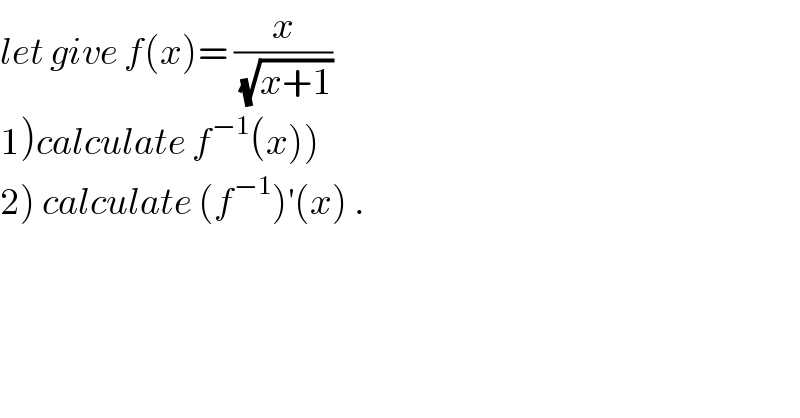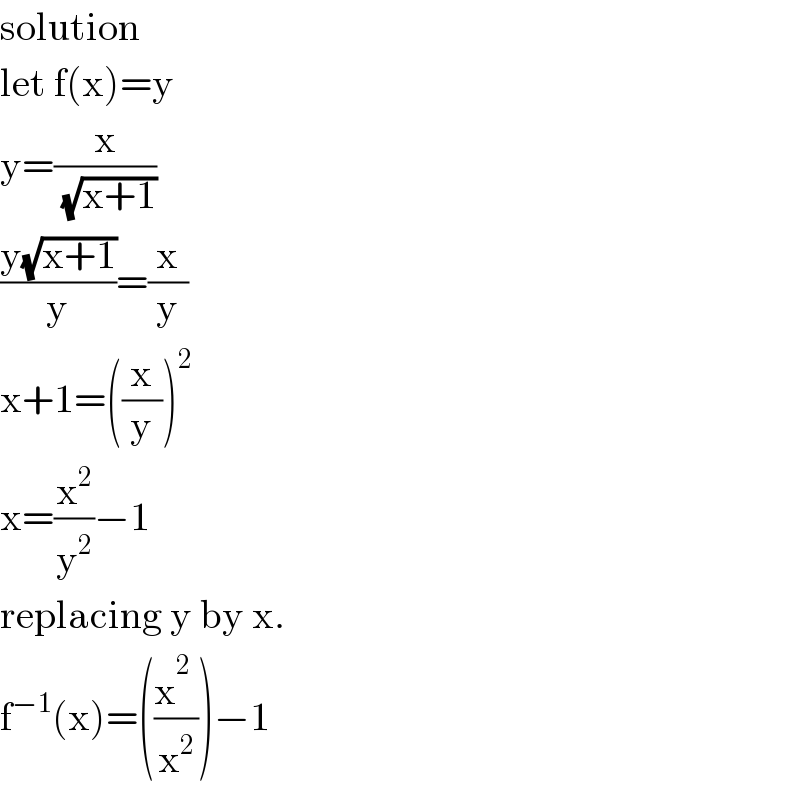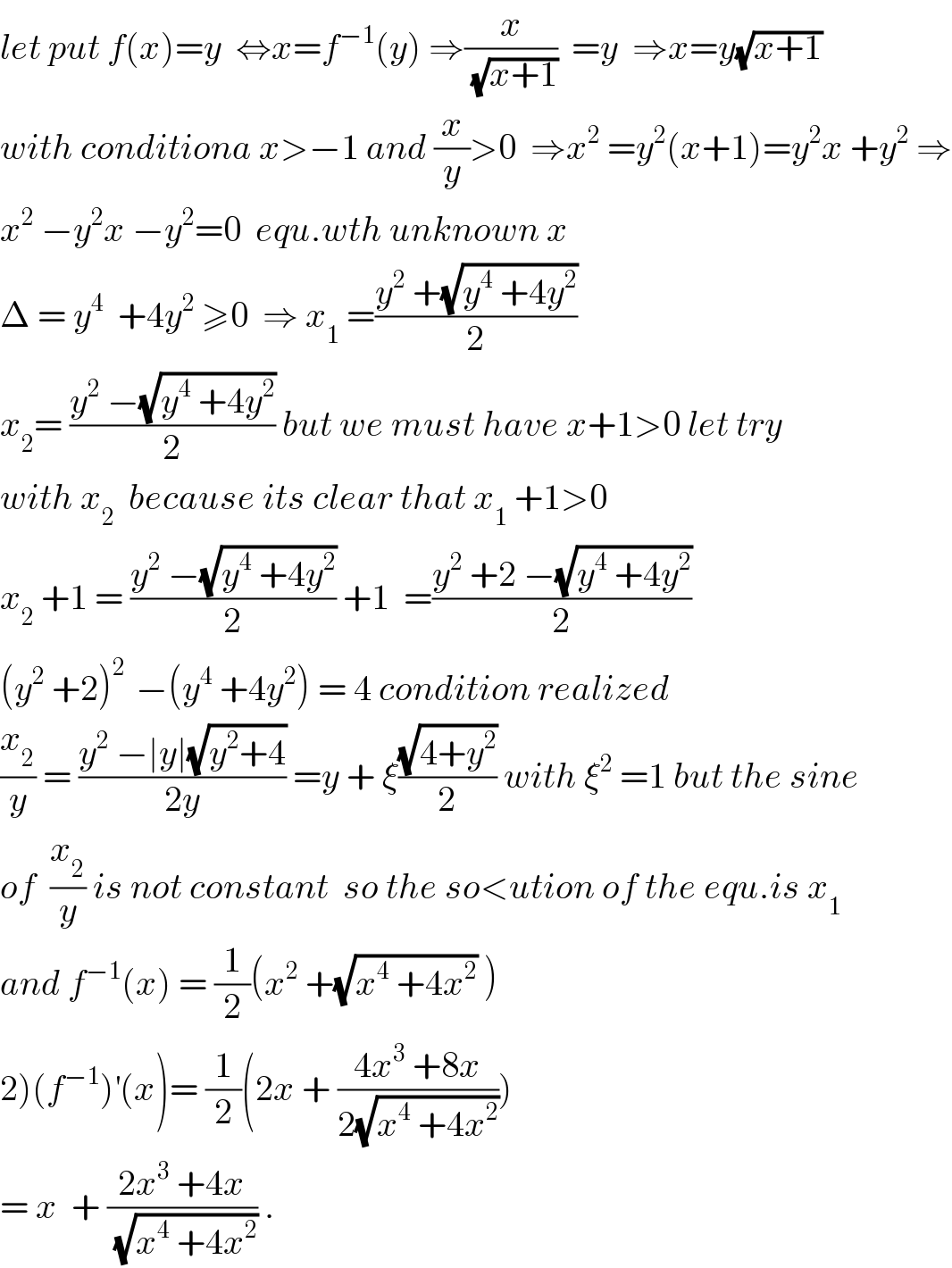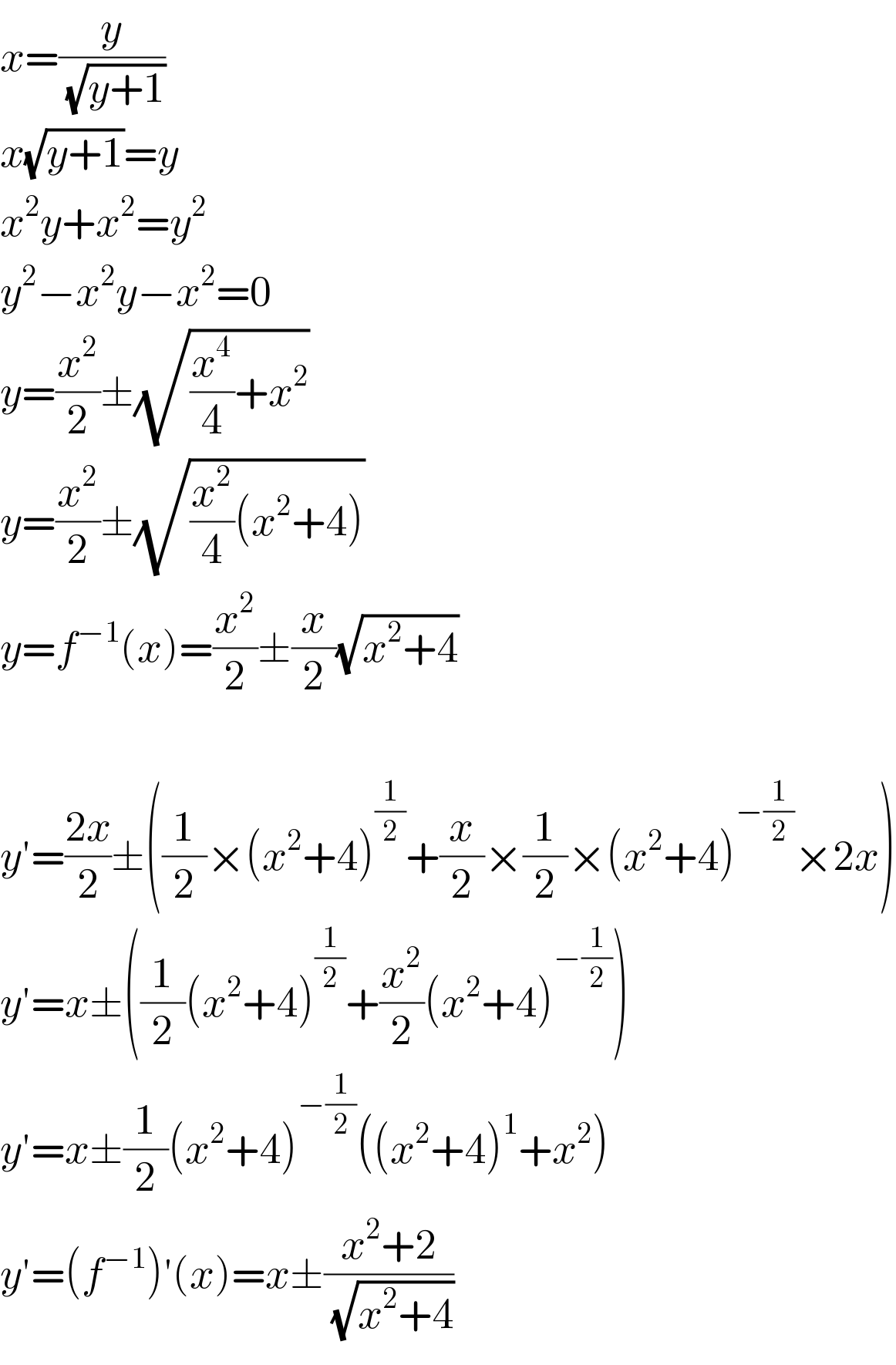
Question and Answers Forum
Previous in Relation and Functions Next in Relation and Functions
Question Number 32701 by caravan msup abdo. last updated on 31/Mar/18

Commented by Rio Mike last updated on 31/Mar/18

Commented by MJS last updated on 31/Mar/18

Commented by abdo imad last updated on 01/Apr/18

Answered by MJS last updated on 31/Mar/18

